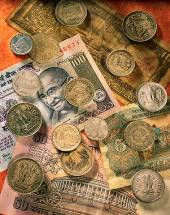 The weakening rupee has made four Indian cities, including New Delhi and Mumbai cheaper for expatriates to live in, even as many Asian cities have turned expensive, says a Mercer survey.
The weakening rupee has made four Indian cities, including New Delhi and Mumbai cheaper for expatriates to live in, even as many Asian cities have turned expensive, says a Mercer survey.
Global HR services firm Mercer's survey of 214 cities worldwide has ranked Tokyo as the most expensive, while Karachi is the least costly place for expatriates.
In the Mercer 'Worldwide Cost of Living Survey 2012', New Delhi has slipped to 113th position (from 85 last year), while Mumbai is at 114th place (from 95).
Bengaluru and Kolkata dropped to 187th and 208th spots, respectively.
These two cities were at 180th and 203rd positions, respectively, last year.
However, Chennai became more expensive to live in and climbed to 190th rank from 194th place in 2011 list.
"The reason why Indian cities are going down in rankings when compared to last year (except Chennai) is due to the weakening of the rupee against the dollar by more than 8.5 per cent in one year.
"We use New York as the base city and all cities are compared against it," Mercer Director (Information Products Solution) Muninder Anand said.
Tokyo has emerged as the most costly city for expatriates, pushing Luanda (in Angola) to the second spot.
At the third place is Osaka, followed by Moscow and Geneva.
Other cities in the top 10 are Zurich and Singapore (both ranked 6th), N'Djamena (8), Hong Kong (9) and Nagoya (10). N'Djamena is in Chad.
There are five Asian cities in the top 10 most expensive places to live in for expatriates.
"In Asia, more than six in 10 cities moved up in the rankings, including all surveyed cities in Australia, China, Japan and New Zealand.
"Cities in Australia and New Zealand witnessed some of the biggest jumps, as their currencies strengthened significantly against dollar," Nathalie Constantin-Metral, Principal at Mercer, said.
She is responsible for compiling the ranking each year.
Compared to New York, most European cities have witnessed a decline in the cost of living.
The annual rankings measure the comparative cost of living for expatriates in 214 major cities. It focuses on comparing the cost of over 200 items in each location, including housing, transport, food, clothing, household goods and entertainment.
The ranking depends on the relative strength of a currency against the dollar during March 2011 to March 2012.
Further, price movements over the 12 month-period compared to those in New York City as the base, is also taken into account.









